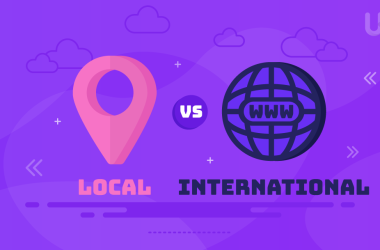Every time we write a domain name it always comes with it (com, .net, .org.etc.) These three letters are necessary and they are called “Top-Level Domains”.
What is the significance of these three letters at the end of a domain name? What is its purpose and is it the only one that determines the identity of the site? Because not writing it or writing it wrongly takes us to the wrong site, the answer to all these questions is between the lines of this article.
What are TLDs?
They are also called Internet domain extensions or domain suffixes. Thanks to the TLD, you can immediately know what kind of information the site is providing. For example, if the URL you type ends in gov., you know you will find information related to the government. Each TLD contains a registry managed by a specific entity. These parties are controlled by the Internet Corporation for Assigned Names (ICANN). But why are there so many TLDs? Since a TLD tells you what it is associated with such as its geographic area, who owns it, or its purpose, there will be quite a few options to choose from.
How many types of domains?
- Country Codes (CCTLD): Each country has its own domain based on a two-letter code, for example, Russia (.RU) domain.
- Generic Tokens (GTLD): Anyone can register with these types and there are many of them (com, .org, .info,.net) that can include geo-marks or trademarks.
- Infrastructure Codes (ARPA): This range includes only one type that is controlled by the Internet Assigned Numbers Authority (arpa), which stands for “Address and Routing Parameter Area”.
- Custom Tokens (STLD): Private organizations sponsor and manage this type of restricted domain that is assigned only if the necessary conditions are met, such as .asia, .edu, .aero, and .jobs.
- Creative Characters (CTLD): such as tv. TV programs and other video projects, name. For sites that focus on a specific person, me. Personal branding projects, expert. To show the world who has mastered a specific niche.
- International Codes (ITLD): These codes are for international signs that can denote a specific international organization.
These were the types of global domains that you can pass with you while you use the Internet, after this article you are fully aware of each domain and what it symbolizes and aims.








